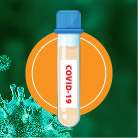≡

Too young for this: Facing Colorectal Cancer at a much younger age

Dr Clara Wu
| Director, Emergency Medicine Centre, and Consultant in Emergency Medicine |
Emergency Cases
Heat Stroke
Heatstroke is the most severe form of the heat-related problems, often resulting from exercise or heavy work in hot environments combined with inadequate fluid intake. Young children, older adults, people who are obese and people born with an impaired ability to sweat are at high risk of heat stroke. Other risk factors include dehydration, alcohol use, cardiovascular disease and certain medications.
Symptoms of heat stroke:
- Rapid heartbeat
- Rapid and shallow breathing
- Elevated or lowered blood pressure
- Cessation of sweating
- Irritability, confusion or unconsciousness
- Feeling dizzy or lightheaded
- Headache
- Nausea
- Fainting, which may be the first sign in older adults
- abnormal high body temperature, usually exceed 39-41°C
First aid to patient:
- Away from the high temperature environment, move to a cool area (indoors, or at least in the shade)
- Remove excess clothing
- Drink enough water or electrolyte beverages
- Cool the patients. Put a wet towel on skin, or cold compresses to neck, arm and leg joints
- Seek medical advice as soon as possible
Prevention:
- Wear light-coloured loose clothing to reduce heat absorption and facilitate sweat evaporation and heat dissipation.
- Wear a wide-brim hat or using an umbrella, in order to avoid UV sunlight
- Bring and drink plenty of water to prevent dehydration
- If you must work in a hot environment, get into a cool area for a rest every 30 minutes
- If you get flu or virus, such as Gastroenteritis, avoid outdoor activities and work in a hot environment








